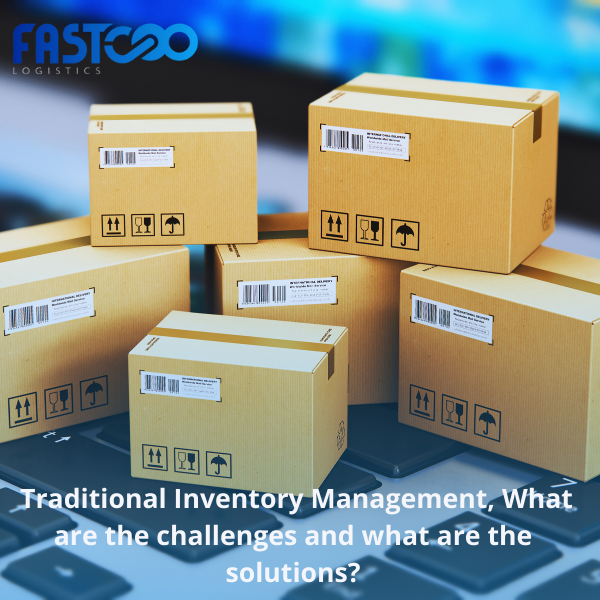Traditional Inventory Management, What are the challenges and what are the solutions?

A lot of companies still depend so far on traditional inventory management and this would negatively affect the growth of their business, especially with the huge development that the inventory management industry is witnessing, and in general, inventory management is a systematic approach to ordering, storing and selling both raw materials and finished products as it is the process through which the products are tracked and organized for the period owned by the company.
and in this article we will discuss what traditional inventory management is and what are the most important updates it faces, and we will also show you the best solutions to get rid of traditional inventory management.
What is traditional inventory management?
Inventory management has many goals and the primary goal is to reduce storage costs and achieve the best possible capital investment from the project.
Many people do not realize the true cost of inventory, which may reach 30% of the value of the capital,
And it may seem to you that a small percentage does not affect the expenses, but it will affect your profits significantly.
Also, traditional inventory management techniques can negatively affect your profits as well as your ability to grow and expand.
What is meant by traditional inventory management is the way in which inventory is managed in a manner that focuses on improving forecasting continuously.
However, from the huge developments, there has become more importance to the need for more accurate forecasts,
And therefore there is an urgent need for a new model that enables a proactive approach to solve inventory problems before they occur.
This is something that traditional inventory management cannot do, because it only focuses on solving inventory management problems by:
- Improving the point-of-order process.
- Adjusting buffer stock levels.
Challenges for Traditional Inventory Management
There are many challenges facing traditional inventory management. As mentioned, traditional inventory management focuses solely on solving inventory management problems by optimizing the point-of-order process or adjusting buffer stock levels.
But at the moment, this is not enough to meet the expectations and desires of customers and the fluctuations of the market as well.
Here are the major updates facing traditional inventory management:
1. Having insufficient visibility of demand
One of the major updates facing traditional inventory management is its lack of adequate demand visibility,
As it relies on mere forecasting and is not able to track inventory at the moment and forecast appropriately.
2. Existence of isolated supply chains
The second challenge facing traditional inventory management is that this type of management is not able to efficiently track inventory levels between incoming and outgoing logistics operations or even within a single warehouse.
This hinders expansion and growth in the market, and companies lose the ability to control inventory, all of which will contribute to raising logistical costs and stock running out.
And all of this will eventually lead to lower levels of customer satisfaction with the service provided.
3. Inability to accurately forecast demand
Traditional inventory management suffers from insufficient forecasting of demand accurately, and this will cause major problems.
Especially since one of the most important elements of inventory management is the ability to accurately forecast demand, and therefore an imbalance in accurate forecasting will result in:
- A loss of competitive advantage.
- The inability to make the right decisions.
Solutions for Traditional Inventory Management
Companies need to have a complete view of their inventory, in order to be able to take full control of their inventory and fulfill customer orders in the best possible way.
Even now some are using traditional inventory management not knowing what the right solutions are for it.
Here is a collection of the best traditional inventory management solutions that will help you grow your business and maintain accurate inventory forecasting:
1. Online inventory control solutions
One of the best traditional inventory management solutions is to monitor and control your inventory online.
Also implementing inventory control online helps you overcome traditional inventory control problems.
2. Remove manual processes
The second best traditional inventory management solution is to get rid of manual processes and introduce automated online inventory management systems.
Which will help you effectively in providing a clear view of the expenses related to your inventory, thus managing and controlling it better.
3. Improve customer satisfaction
Controlling your inventory online will help you improve customer satisfaction, and this is perhaps one of the best traditional inventory management solutions.
This will help customers to know the availability of the items they want, as well as get a notification if the items they want are available.
This will also enable customers to track the purchase and delivery process until it reaches them.
Meaning that this will provide customers with more transparency, which will enhance customer satisfaction with the service provided.
4. Save resources and reduce waste
Automated systems will help you save a lot of time and costs as well, as automated systems give you:
- Ability to control inventory.
- Access data in real time.
- Information about the product life cycle.
This will help warehouse staff in ensuring that old products are selected so that they are sold first before they expire and incur a lot of losses.




